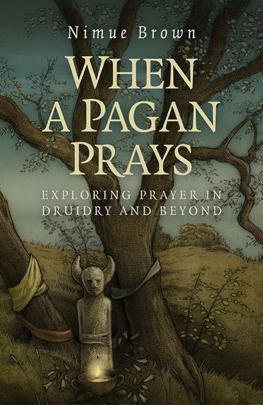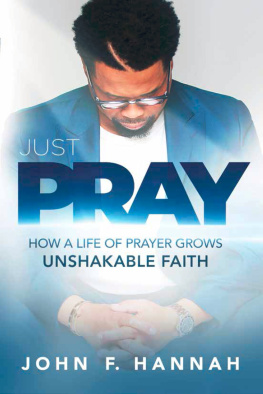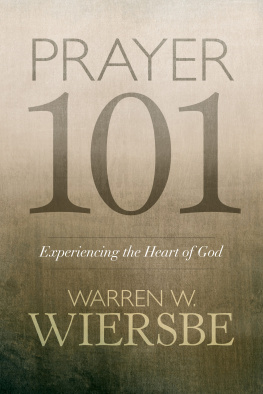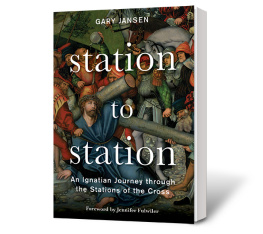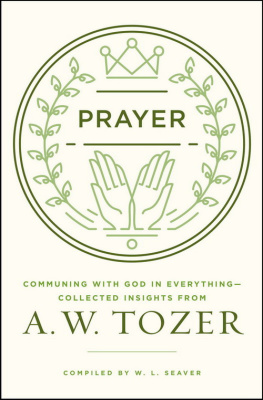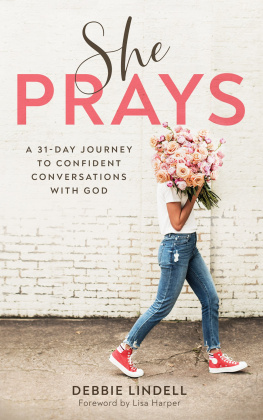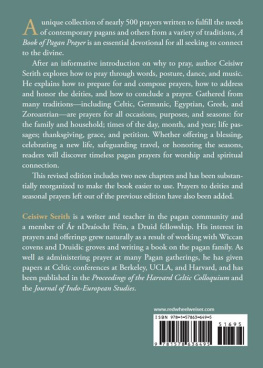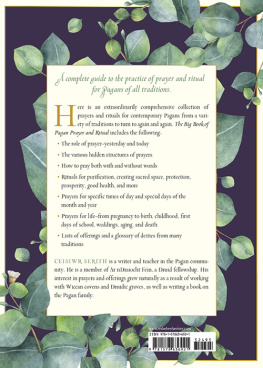
WHAT PEOPLE ARE SAYING ABOUT
WHEN A PAGAN PRAYS
When a Pagan Prays is a fascinating look into why and how we pray that tackles the difficult questions of Pagan prayer with eloquence. Essential reading for all Druids and any Pagan who prays or wonders how prayer fits in to modern practice.
Morgan Daimler, author of Where the Hawthorne Grows
In When a Pagan Prays, Nimue Brown has crafted an engaging, heartfelt and careful exploration of her journey toward reclaiming prayer. This book is a wonderful introduction to prayer for any spiritual seeker. It will especially appeal to those who value both rationality and spirituality and are concerned with the profound ethical questions facing the contemporary world. When a Pagan Prays bravely faces these challenges with an open heart and open mind.
Jamie Heckert, PhD, Integral Yoga teacher and co-editor of Anarchism & Sexuality: Ethics, Relationships and Power

First published by Moon Books, 2014
Moon Books is an imprint of John Hunt Publishing Ltd., Laurel House, Station Approach,
Alresford, Hants, SO24 9JH, UK
www.johnhuntpublishing.com
www.moon-books.net
For distributor details and how to order please visit the Ordering section on our website.
Text copyright: Nimue Brown 2013
ISBN: 978 1 78279 633 6
All rights reserved. Except for brief quotations in critical articles or reviews, no part of this book may be reproduced in any manner without prior written permission from the publishers.
The rights of Nimue Brown as author have been asserted in accordance with the Copyright,
Designs and Patents Act 1988.
A CIP catalogue record for this book is available from the British Library.
Design: Stuart Davies
www.stuartdaviesart.com
Printed and bound by CPI Group (UK) Ltd, Croydon, CR0 4YY
We operate a distinctive and ethical publishing philosophy in all areas of our business, from our global network of authors to production and worldwide distribution.
CONTENTS
Acknowledgements
Thanks as always to Tom Brown for cover art and love and making life not just possible and bearable, but also worth living. Thanks also to Trevor Greenfield, whose encouragement, support and good thinking make all manner of things possible. He is all I could ever wish for in a publisher. Thank you Bish for a catch, and Will Rathouse for an academic rescue mission. Thank you Theo Wildcroft, Talis Kimbery, Jo van der Hoeven, Jamie Heckert, Graeme Talboys, Morgan Daimler, Cat Treadwell, and Lorna Smithers, whose support, kindness and inspiration are much appreciated.
Along the way a lot of people shared thoughts with me about prayer many in informal conversations. I didnt always get names. To anyone who has at any time paused to share a thought, about this or any other subject in person, by email, on the social networking sites or over at www.druidlife.word press.com Id just like to say how much I appreciate this. Books are not written in a void. Books are written in communities, in the midst of life and chaos, and would not happen were it not for the kindness, interest and practical support of other people. Every book is a tribal effort, and I do not believe any author would come out with anything decent if they worked entirely alone. Books have to be for people, and because of people, or theyre just an exercise in navel gazing.
Thank you, everyone.
What is Prayer?
What is prayer?
Can it be said to work in any meaningful way?
Is there a place for prayer in modern Druidry? And, conversely, can you call anything a religion if it does not have a prayer practice within it?
What can we Druids learn from prayer practice in other religious traditions?
This is the story of what happened when a somewhat agnostic Druid took an academic interest in prayer, and then found that approach wasnt going to work.
Chapter One
Making Introductions
I have come to the conclusion that When a Pagan Prays isnt really a book. It is two books that have somehow managed to occupy the same space. One of those books is an amateur attempt at some academic writing, featuring comparative religious studies, psychology, sociology and a bit of research. The other book is an experiential tale of what happened to me when I started to explore prayer as a personal practice. Of course there are areas of overlap between the personal and the theoretical. The book I planned was the first one, the exercise in comparative religion, which turned out not to be enough. Prayer doesnt make sense as an abstract subject. Its left me with some challenges in the redrafting because I want to preserve as best I can the sense of the journey that occurred while I was writing. I think it also worth flagging up that what this book turns into is not quite what it seems to be in the first chapters.
While I usually start non-fiction books with a clear plan, I seldom end up with anything I had anticipated. The process of writing a book is a journey in itself and the destination of the final page not always obvious. Even when I think I have it all figured out, I often prove myself wrong. In the stages of trying to write coherent bits of text, ideas come together and I see things Id not thought of before. This was perhaps least true of my first book, Druidry and Meditation, where I mostly did follow the original plan. So dramatic were my realisations during the first draft of Druidry and the Ancestors that I had to step away for a second period of research before I could finish it. Spirituality without Structure was at least small enough that I could keep it on a leash. This book stopped and started several times, evolving in unexpected ways as I tried to get it onto the paper. I write this introduction having completed a book that has surprised me repeatedly. Thats been rather a lot of fun, and has taken me on a powerful journey.
You could read this book as an inspirational true life account with a passably happy ending. You could take it as the intellectual exploration with self as case study I originally intended. You could probably follow it as a workbook if you feel sufficiently inclined that way. There arent many how tos in here. I am not offering instant transformation, or salvation or any of that claptrap. If the idea of Druidry, of Paganism, or of prayer interests you, then wander along with me through a journey of ideas and experiments that took me to some interesting places.
What is Paganism?
For me, Paganism is a blanket term covering a great many paths. The commonality in Pagan paths is that these are traditions that honour the natural world, and hold the individual responsible for a personal, spiritual journey. Paganism includes polytheism, duotheism, monotheism, pantheism and animism, and there are atheists who identify with Pagan traditions, too. It is not a religious cluster based on esoteric belief, but on recognition of the values of ancestry, nature, and old religions. Magic is often innate to Pagan practice, not necessarily in a spell-making sense, sometimes more about recognising the innately magical aspects of existence.
I self-identify as a Pagan because I honour nature and my ancestors, I am influenced by tradition, and walking my own path. I am a maybeist, in that I have no idea about ultimate truths of life, deity and eternity. I think we humans make a lot of guesses on this, some of which may be right.
Next page
